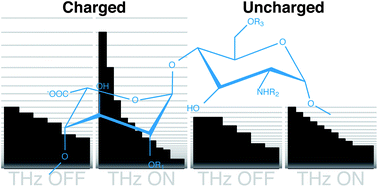Fundamental differences in model cell-surface polysaccharides revealed by complementary optical and spectroscopic techniques
Abstract
The propensity of two classes of

* Corresponding authors
a
Physics Department, University of Liverpool, Oxford Street, Liverpool, UK
E-mail:
gmholder@liv.ac.uk
b Daresbury Laboratory, Warrington, Cheshire, UK
c ANKA Light Source, Forschungzenrum Karlsruhe, Hermann von Helmholtz Platz 1, 76344 Eggenstein Leopoldshafen, Germany
d Cardiff School of Physics and Astronomy, Cardiff University, The Parade, Cardiff, UK
e Istituto di Chimica e Biochimica, “G.Ronzoni”, Via G.Colombo 81, Milano, 20133 Italy
f Department of Structural and Chemical Biology, Institute of Integrative Biology, University of Liverpool, UK
The propensity of two classes of

 Please wait while we load your content...
Something went wrong. Try again?
Please wait while we load your content...
Something went wrong. Try again?
G. M. Holder, A. Bowfield, M. Surman, M. Suepfle, D. Moss, C. Tucker, T. R. Rudd, D. G. Fernig, E. A. Yates and P. Weightman, Soft Matter, 2012, 8, 6521 DOI: 10.1039/C2SM25239B
To request permission to reproduce material from this article, please go to the Copyright Clearance Center request page.
If you are an author contributing to an RSC publication, you do not need to request permission provided correct acknowledgement is given.
If you are the author of this article, you do not need to request permission to reproduce figures and diagrams provided correct acknowledgement is given. If you want to reproduce the whole article in a third-party publication (excluding your thesis/dissertation for which permission is not required) please go to the Copyright Clearance Center request page.
Read more about how to correctly acknowledge RSC content.
 Fetching data from CrossRef.
Fetching data from CrossRef.
This may take some time to load.
Loading related content
